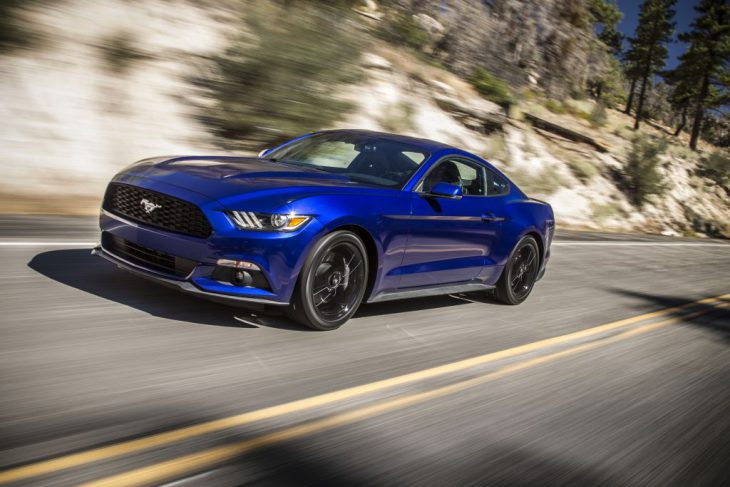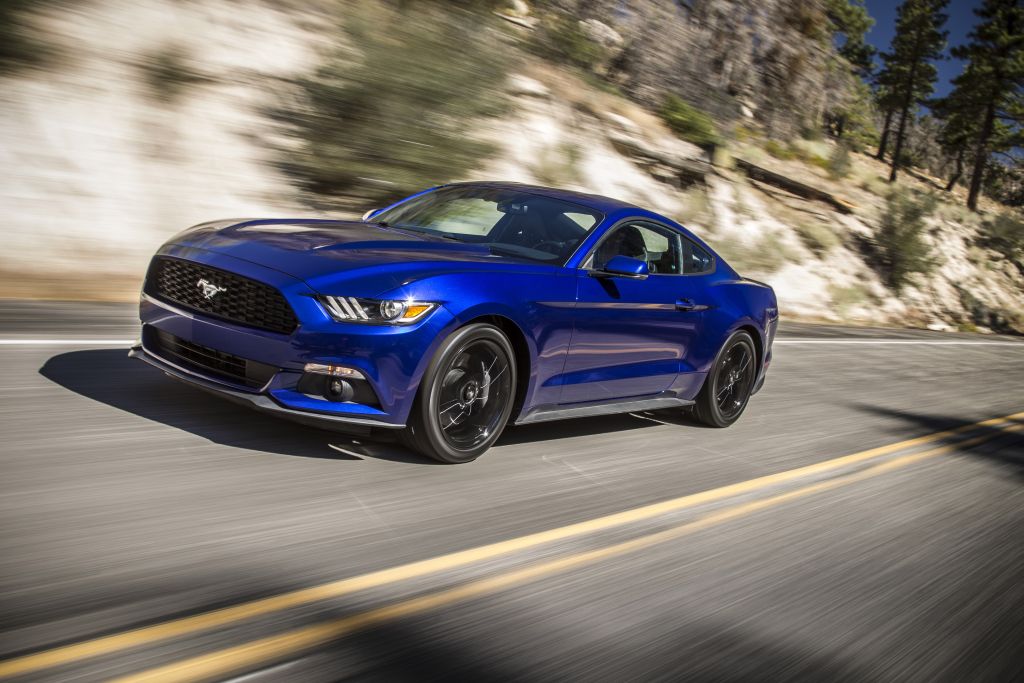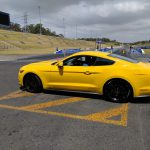
We know not everyone comes here to read about cars, but we do maintain more than a passing interest in complementary technology around our mobile lives, and like it or not, cars are a place where we spend a lot of our time, and we use a fair bit of technology there. Usually when someone thinks of technology in a car, they think of the entertainment system, or maybe driver assist technology — that’s certainly the areas we focus on in reviews — but there is far more under the hood, so to speak.
To do something a little different, we spend the day yesterday with Ford at the Western Sydney International Dragway, driving cars and learning a bit about fuel efficiency. Sounds a bit dull .. I guess .. but it wasn’t. I had always associated Ford’s Mustang with anything except fuel efficiency, but it seems I — and everyone else in attendance — was wrong.
As part of the proceedings, we each made bets on how far a Mustang could go on a litre of fuel. We knew it was their EcoBoost model (so a 2.3l inline four cylinder with a turbo, for those who like detail), and that there might be a touch more than a litre in the tank (given the relatively non-scientific nature of the test), but approximately a litre it was, and off it went.
We ate lunch, talked tech, and broadly assumed the car would make it a few kilometres and give up. In fact, most had assumed it would be around the 10-15km mark before it ran out of gas. Turns out we were wrong. Lunch was finished, and still the Mustang was going … and going … and going … all the way to 27 kilometres before the first engine cough.
Of course, these weren’t real world conditions, just a flat piece of road and fairly steady speed with a couple of corners every 500m or so. You might be wondering how on earth did it do this, when most ‘big’ cars might struggle to even get out of the driveway on just a litre of fuel.
Ford had John and Helen Taylor from Fuel Academy on hand, a lovely couple who between them hold almost 100 world records in fuel economy; they’ve driven around Australia averaging under 4L/100 which is absolutely incomprehensible. Yet, they do it. Even driving to Sydney for this event, the Taylors achieved 3.3L per hundred in a Ford Focus (the same one we reviewed a couple of weeks ago).
Of course, not everyone wants to buy a Ford, or shell out for a new EcoBoost engine (of course, their competitors have similar technology with different names), but there are ways drivers can achieve improved fuel economy in their existing cars too. Here are some of the Taylor’s tips:
- Avoid repeat trips; try to group your outings together if possible.
- Drive when you’re calm, not angry or frustrated — if you don’t, you tend to push the pedals harder and use more gas.
- Make sure your petrol cap is always tight fitting, it can evaporate.
- If you have / use roof racks, only have them on when you’re using them.
- Take your time: don’t drive fast, don’t accelerate hard or even brake hard, keep it smooth and you will use a lot less fuel. Yes, we tried this, and yes it’s true.
- Keep your tyres inflated. Even losing 1psi of pressure will lose up to 3% in fuel efficiency.
- All that stuff that lives in your boot? If it doesn’t need to be there, take it out. It weighs you down and uses more fuel.
Using these tips, we were able to achieve some pretty incredible things, including planting the foot in a Ford Focus and driving a track about 2.5km long including twists, turns and more, and doing so with an average of under 7.5L/100, and even in a Mustang, doing the same track with an average of just 8.4L/100.
My head spins thinking at the technology that’s in our cars today, and if you stopped and thought about it, yours probably would too.






